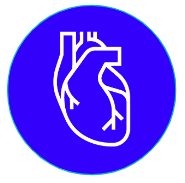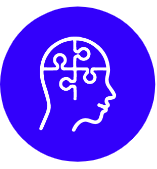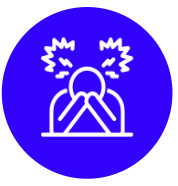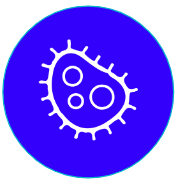Why do we sleep?
Sleep is an inseparable part of our lives. It’s a natural state opposite to being awake. Our body is at rest and regenerates during sleep. We spend ⅓ of our lives in bed. But why is it essential?
What are the benefits of sleep?
How much time should we dedicate to sleep?
It depends on our age for the most part. Adults should sleep 7–9 hours a day, teenagers 8–10 hours and children 9–11 hours. Small children need to rest the most.
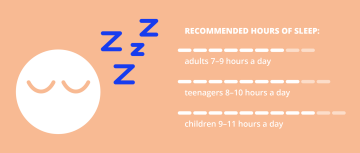
Sleep phases
Sleep has two phases – REM and non-REM – which alternate at intervals of 90–120 minutes. These phases are separated by brief waking phases (movements, change of position). You won’t remember these phases, though.
Non-REM phase
The whole body rests during this phase, and the brain enjoys it the most because of its low activity (slow waves on EEG). Your breathing, heart rate and blood pressure are regular, your body temperature is stable, and muscle tone increases, which leads to body movements.
It’s divided into three stages. During the first two (theta and sigma waves), the eye movement slows, the heart rate decreases, and the body temperature lowers. Sleep is the deepest during the third stage. If someone wakes you up during these stages – not that it’d be easy – you’ll feel disoriented.
REM phase
The REM phase makes up approximately 25% of our sleep. REM sleep is somehow deep, but there’s brain activity happening, which matches wakefulness. Even though the rest of the body sleeps, your brain is awake.
There’s noticeable Rapid Eye Movement. You can have vivid dreams, and your heart rate and blood pressure increase. This phase happens primarily during the second half of the night. If we sleep only for 5 hours, we lose a large amount of REM sleep and its benefits. We might tend to be in a bad mood or irritated.
Rules of sleep hygiene
Here are tips to make your sleep a good-quality one. These also prevent insomnia. We can divide them into several categories:
Adjust sleep schedule
-
Go to bed and wake up at the same time every day (even on the weekend).
-
Make it your priority. Try the “wind down” feature on your phone, reminding you to go to bed 7.5–9 hours before the alarm rings.
-
Don’t sleep during the day. A quick 20-minute nap won’t hurt, but you shouldn’t take it later in the afternoon.
Daily routines
- Use your bed only for sleep and sexual activities.
- Make space for “worry time” during the day.
- Try to spend at least 30 minutes in the sun every day. It’s crucial in the morning hours after waking up.
- Engage in physical activity during the day to make yourself tired. Avoid heavy exercise 3 hours before going to bed – a walk after dinner wouldn’t hurt.
- Don’t drink coffee, black or green tea, coke and cocoa 6 hours before bed.
- Don’t smoke! Nicotine is a stimulant and makes sleep light.
- Don’t drink alcohol even though it makes falling asleep easier because it interferes with sleep quality (especially the second half) and makes you groggy the next day.
- Avoid eating heavy food before bed.
- Also, limit drinking too much before bed to avoid going to the bathroom at night.
Make a bedtime ritual
- Don’t postpone tasks until evening.
- Engage in a monotonous relaxing activity such as reading or listening to music 30 minutes prior to bed. You can try a hot bath as well.
- Switch on dimmed warm-tone lights in the evening.
- Switch off your phone and computer 2 hours before sleep or turn on blue-light filters on the devices.
Adjust the environment
- Sleep in a well-ventilated room. The optimal temperature is 18–20 °C.
- You’ll sleep the best in the dark and silence.
- Good-quality mattresses and pillows are essential.
Sleep disorders
Around 10–15% of people suffer from sleep disorders. These come in different forms, and symptoms vary from fatigue to sleeping during the day. Other times it might take more than 30 minutes to fall asleep, and we wake up more than once at night. The symptom might be waking up an hour before the alarm as well. Sleep disorders might be accompanied by other mental illnesses, such as depression.
Insomnia
It’s a sleep disorder, and the symptoms include trouble falling asleep, waking up early and not being able to snooze again or frequent waking up at night.
If you have insomnia, sleep won’t refresh you. You’ll have trouble during the day with fatigue, sleepiness, concentration and memory. You might feel irritated, depressed or anxious too.
What causes insomnia?
- Stress
- Caffeine, alcohol, smoking
- Work schedule or jet lag
- Bad sleep habits – irregular, eating heavy foods or doing heavy exercise before bed
- Blue light from the screens
Other sleep disorders
- Sleep apnoea is a disorder in which one pauses breathing. The main symptoms include loud snoring and excessive somnolence during the day. Sleep apnoea frequently affects men, overweight people and smokers. Lower oxygen levels in the blood might lead to various other health issues – high risk of heart attack, stroke, high blood pressure or type II diabetes development.
- Parasomnia is abnormal behaviour during sleep. It includes sleep terrors and nightmares, sleepwalking or sleep paralysis.
- Narcolepsy involves excessive daytime somnolence and brief involuntary sleep episodes, commonly in inappropriate or unexpected situations.
What to do when…?
What to do when some symptoms of sleep disorder appear? Work on sleep hygiene! If there’s no improvement after a month and you have trouble at least three days a week, see your GP. They can prescribe hypnotics (sleeping pills) temporarily if the problems persist. Unfortunately, these don’t solve the problem and shouldn’t be taken in the long run without solving other sleep problems. Another treatment method is therapy, namely CBT (cognitive behavioural therapy). If the troubles persist, it’s possible to make an appointment in a sleep lab.
Support online education about prevention
We want people to like prevention and make it a standard part of their lives. That’s why we create infographics, videos, articles or podcasts, which we post on Instagram, YouTube or our website. Help us educate online.
Support online education about prevention
We want people to like prevention and make it a standard part of their lives. That’s why we create infographics, videos, articles or podcasts, which we post on Instagram, YouTube or our website. Help us educate online.
